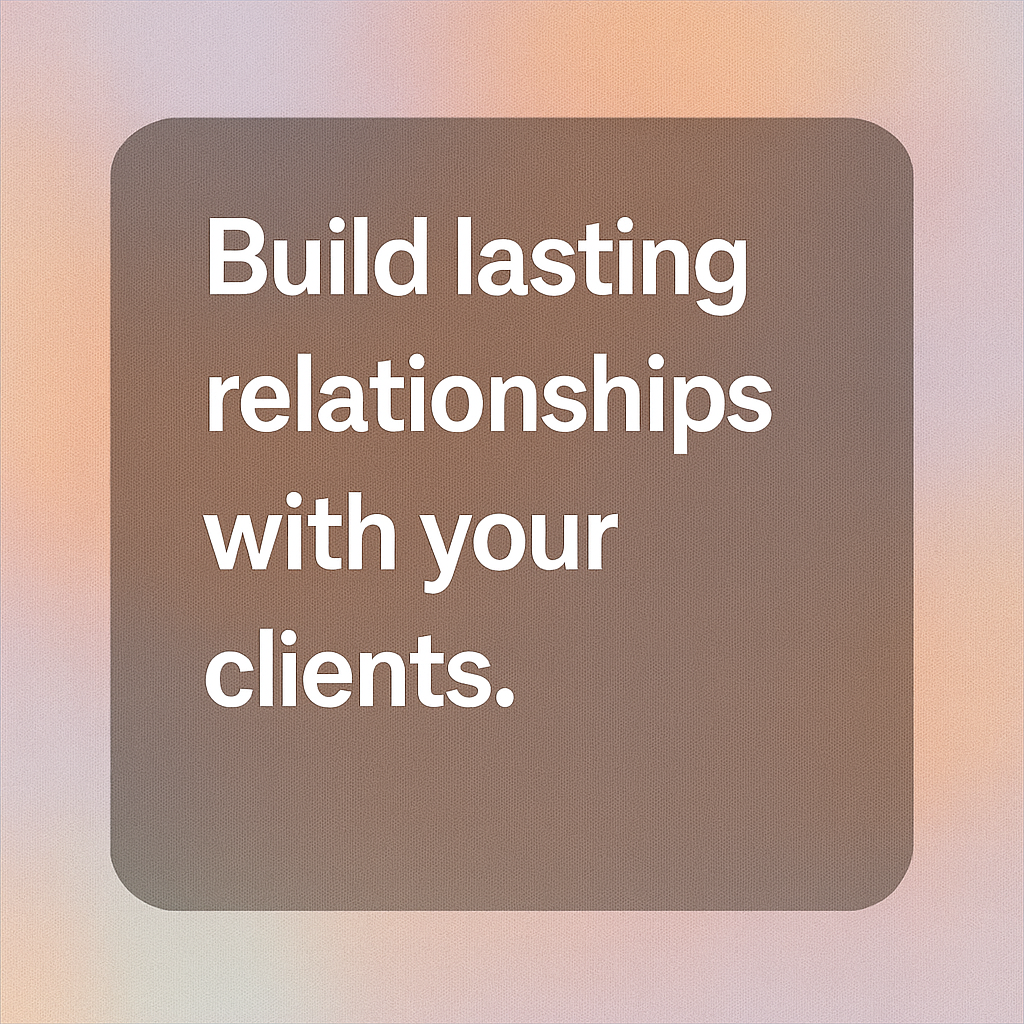
Did you know that businesses lose up to 20 percent of revenue each year due to poor client retention? Learn how to improve client retention as every missed message or confusing system can push loyal customers away. Building genuine, long-lasting relationships starts at every interaction, not just the big moments. When your process feels consistent and responsive, clients notice the difference. Discover proven strategies that turn everyday touchpoints into trust-building opportunities so your business stands out for reliability and care.
Table of Contents
- Step 1: Assess Current Client Touchpoints
- Step 2: Implement Automated Personalized Follow-Ups
- Step 3: Deliver Consistent Value and Exclusive Offers
- Step 4: Gather and Act on Client Feedback
- Step 5: Track Retention Metrics and Optimize Strategies
Quick Summary
| Key Point | Explanation |
|---|---|
| 1. Assess Client Touchpoints | Map all client interactions to identify potential communication breakdowns that may hinder the client experience. |
| 2. Automate Personalized Follow-Ups | Segment clients for targeted follow-ups, ensuring messages feel personal and relevant, enhancing ongoing engagement. |
| 3. Deliver Consistent Value | Provide ongoing education and special offers that demonstrate appreciation, fostering lasting client relationships. |
| 4. Gather Actionable Client Feedback | Create diverse channels for feedback to gain insights, and promptly act on client suggestions to improve services. |
| 5. Track and Optimize Retention Metrics | Regularly monitor key performance indicators to identify trends and areas for improvement in client satisfaction and loyalty. |
Step 1: Assess Current Client Touchpoints
Understanding your current client interaction points is critical for creating a seamless experience that builds lasting relationships. In this step, you will map out every interaction your clients have with your business from initial contact through ongoing service delivery.
Start by listing all potential touchpoints chronologically. These might include website contact forms, initial consultation emails, scheduling platforms, invoicing systems, project management tools, follow up communications, and post project feedback channels. According to research from IMRG, customers expect a seamless brand experience across all platforms.
Create a visual journey map that tracks each interaction. Plot out how clients move through your business process step by step. Pay special attention to potential friction points where communication might break down or feel inconsistent.
Here’s a comparison of common client touchpoints and their potential friction points:
| Touchpoint | Typical Channel | Potential Friction Point |
|---|---|---|
| Website Contact Form | Web | Slow responses Unclear instructions |
| Initial Consultation | Email/Phone | Scheduling delays Lack of clarity |
| Scheduling | Online Platforms | Complicated UI Missed confirmations |
| Invoicing | Email/Invoicing Tool | Payment confusion Delayed bills |
| Project Management | PM Tools | Limited updates Technical issues |
| Follow-up Communication | Email/Phone | Inconsistency Overlooked questions |
| Post-Project Feedback | Surveys/Direct Call | Low participation Ambiguous results |
Pro Tip: Use a simple spreadsheet to track each touchpoint and note its current effectiveness.
As you map these interactions, look for gaps or disconnected experiences. According to B2B research, fragmented experiences significantly erode client trust. Your goal is to create a unified journey where every interaction feels intentional and professional.
In the next step, you will analyze these touchpoints to identify opportunities for smoother client interactions and enhanced communication strategies.
Step 2: Implement Automated Personalized Follow-Ups
Automating personalized follow-ups transforms client relationships by ensuring consistent communication without consuming all your time. This step will help you design strategic automated interactions that feel genuine and valuable to each client.
Start by segmenting your client base into distinct groups based on their specific needs, project types, or engagement levels. According to research from UMA Technology, leveraging data analytics allows businesses to tailor interactions based on customer preferences and behaviors.
Choose an automation platform that allows deep customization. Your follow-up messages should feel personal, not generic. Use merge fields to include client names, reference specific project details, or highlight their unique challenges. Follow-up automation tools can help streamline this process.
Pro Tip: Set clear expectations in your initial communications to prevent unexpected interactions.
Develop a sequence of touchpoints that provides value. This might include check in emails, resource sharing, progress updates, or quick surveys. According to the Online Marketing Institute, even repeat clients remember negative experiences, so ensure every automated interaction feels thoughtful and relevant.
In the next step, you will evaluate the effectiveness of your automated follow-up strategy and make necessary refinements.
Step 3: Deliver Consistent Value and Exclusive Offers
Consistent value delivery transforms client relationships from transactional to transformational. This step focuses on creating meaningful interactions that make clients feel uniquely appreciated and continuously supported.
Develop a content strategy that provides ongoing education and insights specific to your client base. According to research from IMRG, customers expect a seamless brand experience across all platforms. This means your value delivery should feel cohesive whether it arrives through email, social media, or direct communication.
Create tiered exclusive offers that reward client loyalty. Messaging for premium offers can help you craft compelling communication that resonates. According to the Online Marketing Institute, surprising clients with unexpected benefits creates a lasting positive impression.
Pro Tip: Use the element of surprise when delivering special offers rather than announcing them in advance.
Consider developing a loyalty program that provides incremental benefits. This might include early access to new services, exclusive workshops, personalized strategy sessions, or special discounts. The key is making each client feel their individual needs and contributions are recognized.
In the next step, you will learn how to systematically track and measure the impact of your value delivery strategies.
Step 4: Gather and Act on Client Feedback
Client feedback is the compass that guides your business improvement and demonstrates your commitment to exceptional service. This step will help you create a systematic approach to collecting meaningful insights and transforming them into actionable strategies.
Design multiple feedback channels to capture diverse perspectives. According to research from CIO Wiki, gathering customer feedback helps businesses understand client needs and identify improvement areas. How to improve client experience can provide additional strategies for creating robust feedback mechanisms.
Implement a mix of quantitative and qualitative feedback methods. These might include short post project surveys, video testimonial requests, one on one interviews, or periodic email questionnaires. Ensure your questions are specific and open ended to encourage detailed responses.
Pro Tip: Make providing feedback easy and quick for your clients to increase participation rates.
As research from WebPeak indicates, listening to customers is one of the most effective retention tactics. When you receive feedback, create a transparent process for acknowledging and acting on suggestions. Communicate back to clients about the changes you are implementing based on their input.

In the next step, you will learn how to systematically analyze and prioritize the feedback you receive to drive meaningful business improvements.
Step 5: Track Retention Metrics and Optimize Strategies
Measuring client retention performance transforms guesswork into strategic decision making. This step will help you develop a robust system for tracking key indicators that reveal the true health of your client relationships.
According to research from UMA Technology, continuous monitoring of specific metrics is critical. Client retention analytics can help you track essential indicators like Churn Rate, Customer Satisfaction Scores, Net Promoter Score, and Customer Lifetime Value. These metrics provide a comprehensive view of your client engagement and loyalty.
Establish a regular reporting schedule where you review these metrics. Create visual dashboards that make it easy to spot trends and potential issues. Look for patterns like declining engagement, reduced project frequency, or communication gaps that might signal potential client loss.
Pro Tip: Set up automated alerts for significant changes in your key retention metrics.
Research from IMRG emphasizes that customers expect a seamless experience across all interactions. Use your metrics to identify specific areas where you can improve communication, service quality, or client support. Turn data into actionable insights that directly enhance client satisfaction.
In the final step, you will learn how to create a continuous improvement framework that keeps your client retention strategies dynamic and effective.
Boost Your Client Retention with Fluum’s AI-Powered Solutions
The challenge of maintaining consistent and meaningful client interactions can feel overwhelming for solopreneurs balancing multiple roles. As highlighted in the article “Improve Client Retention: Proven Steps for Solopreneurs,” common pain points include managing follow-ups, delivering personalized value, and tracking feedback effectively. These are crucial steps to avoid friction and build trust but often demand more time than you have. What if you could automate these essential tasks while keeping the personal touch your clients expect?
Fluum’s AI co-founder is designed to transform your client retention strategy by handling outreach, personalized follow-ups, scheduling, and even payment management—all tailored to your unique business needs. Imagine freeing up hours every week while still creating seamless, engaging journeys that your clients will appreciate. Fluum’s adaptive system learns and evolves with your workflow, ensuring every communication feels thoughtful and professional.
Take control of your client relationships today with Fluum’s powerful automation and smart insights.

Ready to scale your solo business without losing that personal connection that keeps clients loyal? Explore how Fluum can help you automate client retention and drive sustained growth. Start your journey now at Fluum Pricing and see how intelligent client management can make all the difference.
Frequently Asked Questions
How can I assess my current client touchpoints effectively?
Understanding your client touchpoints is crucial for improving retention. Map out every interaction your clients have with your business, such as emails and invoicing systems, and identify potential friction points. Use a visual journey map to track these interactions systematically.
What are the best practices for implementing automated follow-ups?
To automate effective follow-ups, segment your clients based on their needs and personalize your messages. Use client names and specific project details in your communications to create a genuine experience. Begin this process by choosing a customizable automation platform that meets your needs.
How do I deliver consistent value to improve client retention?
Consistent value can be delivered through ongoing educational content tailored to your clients’ specific needs. Develop a content strategy that includes valuable insights and create tiered offers as rewards for client loyalty. Start by prioritizing your audience’s challenges to ensure your messaging resonates.
What methods should I use to gather client feedback?
Design multiple channels for collecting feedback, such as post-project surveys or one-on-one interviews. Ensure your questions are specific and encourage detailed responses by using open-ended formats. Begin establishing these channels right away to understand your clients’ needs better.
How can I track retention metrics to optimize my strategies?
To measure and improve client retention, establish a system for tracking key metrics like Churn Rate and Customer Satisfaction Scores. Set a regular reporting schedule to review these metrics and create visual dashboards for easy analysis. Implement this regular tracking to quickly identify areas needing improvement.
How often should I review my client retention strategies?
You should review your client retention strategies regularly, ideally every month or quarter. Create a continuous improvement framework that allows you to adapt based on the insights gathered from your retention metrics. Start this routine immediately to keep your strategies fresh and effective.
Recommended
- Understanding Client Retention Strategies For Success
- Understanding Client Management Strategies For Success
- Digital Marketing Fundamentals For Solopreneur Success
- How To Handle Difficult Clients Effectively For Solopreneurs
- Fluum | Effective Stress Management Techniques for Busy Professionals
- Fluum | How to Onboard Clients Effectively for Lasting Success
- Fluum | Master Managing Multiple Projects for Success
- Fluum | Build Your Brand with a Branding Builder in 2025
- Fluum | 7 Customer Retention Examples to Boost Your Business



